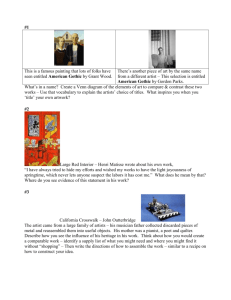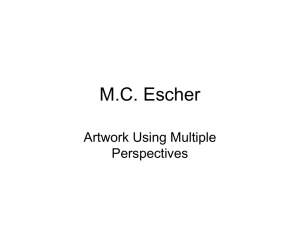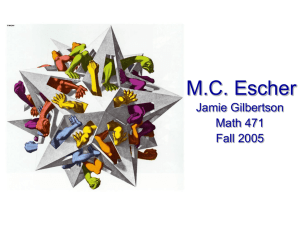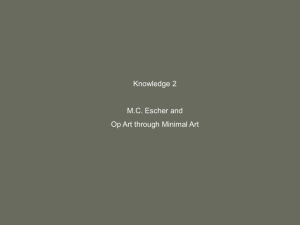MC Escher - Colin Aguilar's Computer Art Site
advertisement
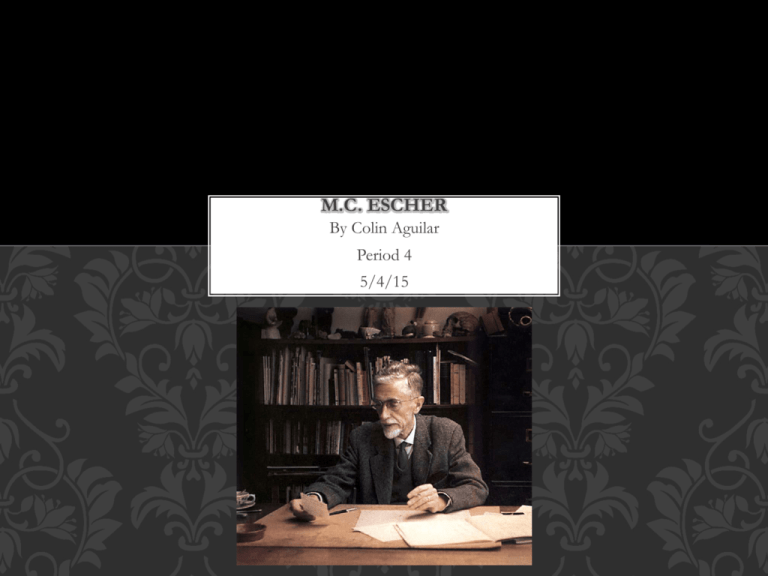
M.C. ESCHER By Colin Aguilar Period 4 5/4/15 LIFE OF M.C. ESCHER Born on June 17, 1898, in Leeuwarden, Netherlands, illustrator M.C. Escher developed a print and engraving style that distinctively played with orientation and space. Influenced by Moorish designs in Spain, works like "Day and Night" featured interlocking forms and transformation on a surreal canvas. Later embraced by both artistic and math/science communities, Escher died on March 27, 1972. RELATIVITY • • Printed December 1953 Lithograph This is one of Escher’s most popular works and has been used in a variety of ways, as it can be appreciated both artistically and scientifically. Interrogations about perspective and the representation of threedimensional images in a twodimensional picture are at the core of Escher's work, and Relativity represents one of his greatest achievements in this domain. DRAWING HANDS • Printed 1948 • Lithograph This artwork is yet another mathematically inspired piece of work. It shows both very simple and extremely three-dimensional features, as well as an abstract idea (hands drawing each other). HAND WITH REFLECTING SPHERE • Printed January 1935 • Lithograph The piece is also known as SelfPortrait in Spherical Mirror. It depicts a hand holding a reflective sphere. In the reflection, most of the room around Escher can be seen, and the hand holding the sphere is revealed to be Escher’s. Self-portraits in reflective, spherical surfaces are common in Escher’s work. THREE SPHERES II • • Printed April 1946 Lithograph The sphere on the left is transparent with a photorealistic depiction of the refracted light cast through it towards the viewer and onto the flat surface. The sphere in the center is reflective. Its reflection is a self-replicating image of Escher in his studio drawing the three spheres. In the reflection one can clearly see the image of the three spheres on the paper Escher is drawing on: in the center sphere of that image, one can vaguely make out the reflection of Escher's studio, which is depicted in the main image. This process is implied to be infinite, recursive. HOMAGE My Piece E s c h e r ’s P i e c e REFLECTION Overall, it was really fun to do some research on such an interesting artist like Escher. It was pretty cool that he applied various mathematical concepts to his artworks and made visually appealing pieces of art. Them being threedimensional also adds a nice factor to them. Though he died in 1972, his artworks will be an artistic and mathematical example for many years to come. Artist’s Website: http://www.mcescher.com/
